The War on Teak
Trespassing on our neighbors property leads us down a road we never imagined taking. Within months, we found ourselves razing tens of thousands of teak trees in our first attempt to reforest the land we were building on - a choice that would come to define the next decade of our careers.
author
KRISTIN MORALES, LEED BD+C
FOUNDER / PRINCIPAL DESIGNER
IVAN MORALES
FOUNDER / PRINCIPAL DESIGNER
A couple of weeks after moving to Panama to oversee the construction of AMA Estancia, we decided to hop the fence and explore the neighbor's property, where an eco-resort was under construction. We weren't great hikers back then and didn't think to bring a machete or a map - much less a guide. We looked like we were straight out of Brooklyn (we were) - Kristin was wearing her T.U.K. monkey boots. The trailhead started on the beach in a grove of the biggest coconut palms we had ever seen. There were hundreds of them, at least 30ft high, swaying in an elegant dance that washed a refreshing breeze over us. Under our feet, hermit crabs were scuttling around, and as we entered a lagoon, we saw snakes and alligators.
The palm grove at the entrance of the hike, now part of Reserva Panamaes
As we journeyed deeper into the forest, nasty thorny plants and fire ants crawled up massive prehistoric looking trees. It was otherworldly. We soon realized that the trail ahead had been washed out - the only way to continue was by walking along the river itself. As we walked along the banks, a deafening and terrifying noise broke out among the treetops as two families of howler monkeys began calling out their territory on either side of the river. New York City felt very far away.
Around noon, we had looped back to the edge of our property. At the fence that marked the property line, the contrast between the two properties was similar to those aerial pictures you see of the border between Haiti and the Dominican Republic. As we stood in a lush, green secondary forest, we gazed out at the brown and barren land in front of us, with spindly teak trees that looked like they were being strangled by the sun.
We crossed into our property and walked another two hours along the teak plantation on our side of the fence. We felt like we were dying. There was no shade, and the only life we saw was a snake that skittered away from us. At that moment, we realized how unnatural the teak farm was - and we knew we had to get rid of it. The land shouldn't look like this - it should have shade and animals like in the neighboring land. The property needed to be restored. This realization would soon have us embarking on a war against this invasive species, and that choice would fundamentally shape the next decade of our work and lives.
Native forest (L) in stark contrast to old teak plantations (R)
Native forest (L) in stark contrast to old teak plantations (R)
Teak (tectona grandis) is a tropical hardwood species endemic to Southeast Asia. So how did a teak farm end up in the Azuero Peninsula of Panama in the first place?
The Azuero Peninsula is where some of the earliest colonizers settled in Panama thanks to its farming potential. The native dry tropical forest and long dry season made the Azuero a perfect candidate for slash-and-burn agriculture. The dry forest came down fast and the rich fertile soil was easy to cultivate. In order to be sustainable, slash-and-burn requires allowing the land to regenerate before burning it again. Unfortunately, decades of excessive burning have rendered this isolated region largely infertile and prone to flooding.
Barren pasture land was the primary land cover in 2009
As farming at scale became impossible, the small towns of the Azuero were sustained by subsistence farming and fishing until a new wave of foreigners discovered the region in the 1990’s, and started buying up the land en masse. These new settlers introduced a crop that could withstand the depleted soil and forest fires - teak - which led to a short period of economic growth for Azuero farmers. Teak was briefly in vogue in Panama on the promise of an attractive ROI. However, the teak didn’t grow as expected in Panama and it intensified the acidity of already acidic soil, rendering land so barren that native plants could no longer grow. The teak choked out native plants and thus obliterated the food source and migration routes of native animals, sending them fleeing to increasingly small patches of native forest miles away. Teak’s moment as Panama’s forestry darling was short lived, but the consequences were devastating.
Now cows roam the dusty pastures of the Azuero. Farmers continue to burn their pastures because they believe it kills pests, weeds and temporarily promotes grass growth for cow feed. As soon as the dry season starts in January each year, the smoke from fires can be seen for miles in the distance. By the end of April the peninsula looks like a war zone and only a few Uvero and teak trees survive this yearly burn. However, fire doesn't just kill weeds, but destroys all microscopic biodiversity, rendering the land infertile over time. Trees and their root systems are gone, and without them not only is there no shade, but animals disappear, the land blows away, water can't be retained, and wells run dry by May each year.
We positioned AMA Estancia on a fallow cow pasture precisely because we wouldn’t have to cut down any trees (you can read about our misadventure with cows in our first post). Seared into our memories of those early days on site is the heat that pounds you so intensely that you can see your skin change color in minutes. The angle of the sun is not the same as in the Northern hemisphere. The sun rays hit you sideways and feel relentless, making you feel like a grizzled piece of jerky under a heat lamp. In lieu of shade, workers cover their faces with shirts and you can only see their eyes. The one Uvero tree left standing on the site of AMA Estancia was the only reprieve. Our workers hung their backpacks on its branches, and at break time took naps and drank coffee in its shade.
A former teak plantation on the site
This was the site as we found it, and the local workers were used to it. We had just accepted the teak, the lack of shade, the relentless heat as just how our site was. It wasn’t until we explored our neighbors property that fateful day that we realized that it didn’t have to be relentlessly hot and void of shade trees. It wasn’t natural, it wasn’t sustainable, and we could do something about it. This was where our restoration and social impact efforts began.
The 10-hectare site of AMA Estancia was within a 170-hectare plot, the majority of which was supposed to be preserved as forest, a conservation prerogative of the owners. However about half of it was composed of abandoned teak forests and pastures - shadeless plots of land void of wildlife. If we wanted native forest, we were going to have to build that too - a task that definitely was not in the drawings, but the need was so clear.
We had about 70,000 teak trees to cut and only a couple of months to get it done. Julio Sandoval was the best lumberjack around. He was native to Azuero but for many years had been living in the Darién Gap - the notorious impenetrable jungle that connects Panama and Colombia. Julio was the perfect man for the job.
We began at the crack of dawn one morning at the end of January 2009. Julio arrived with two of his family members to help, and we had a crew of about 10 guys lined up to assist him. As the sound of the chainsaws ripped through the soft mist of dawn, Kristin remembers feeling like the air was full of anticipation and testosterone, and it made her feel uneasy. Inherently, we knew we were doing the right thing, but cutting down thousands of trees as a conservation effort still felt brutal. It was also a massive amount of work we had just gotten ourselves into.
Julio was an absolute legend. He was able to cut an average of 3 hectares of teak per day. At times he was cutting 3 to 4 trees at a time with a look of glee on his face. We had 10 guys cutting branches and organizing the trees behind his path and they couldn’t keep up.
“The trees came down fast and made us realize how delicate the environment was and how simple it was to destroy it.”

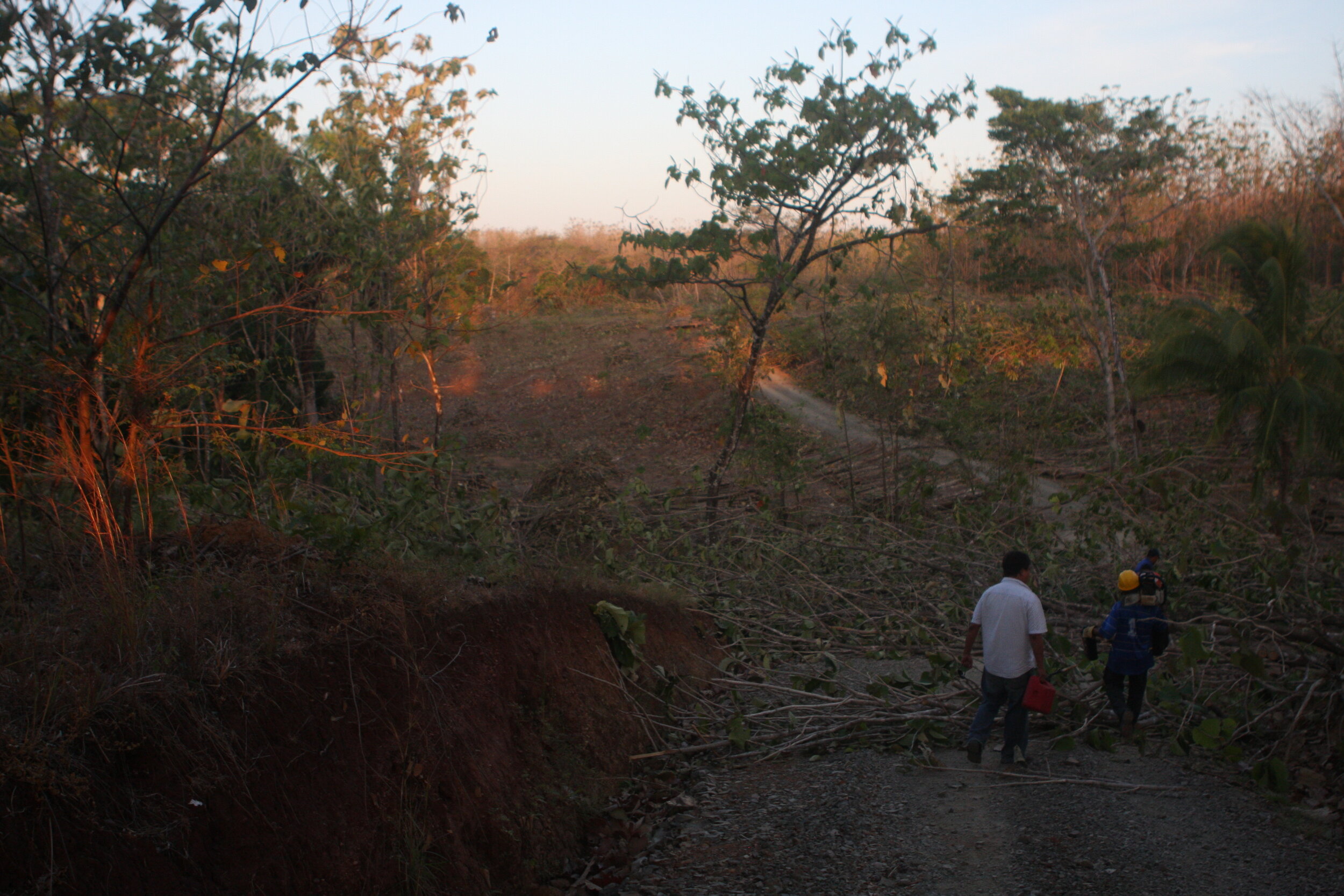
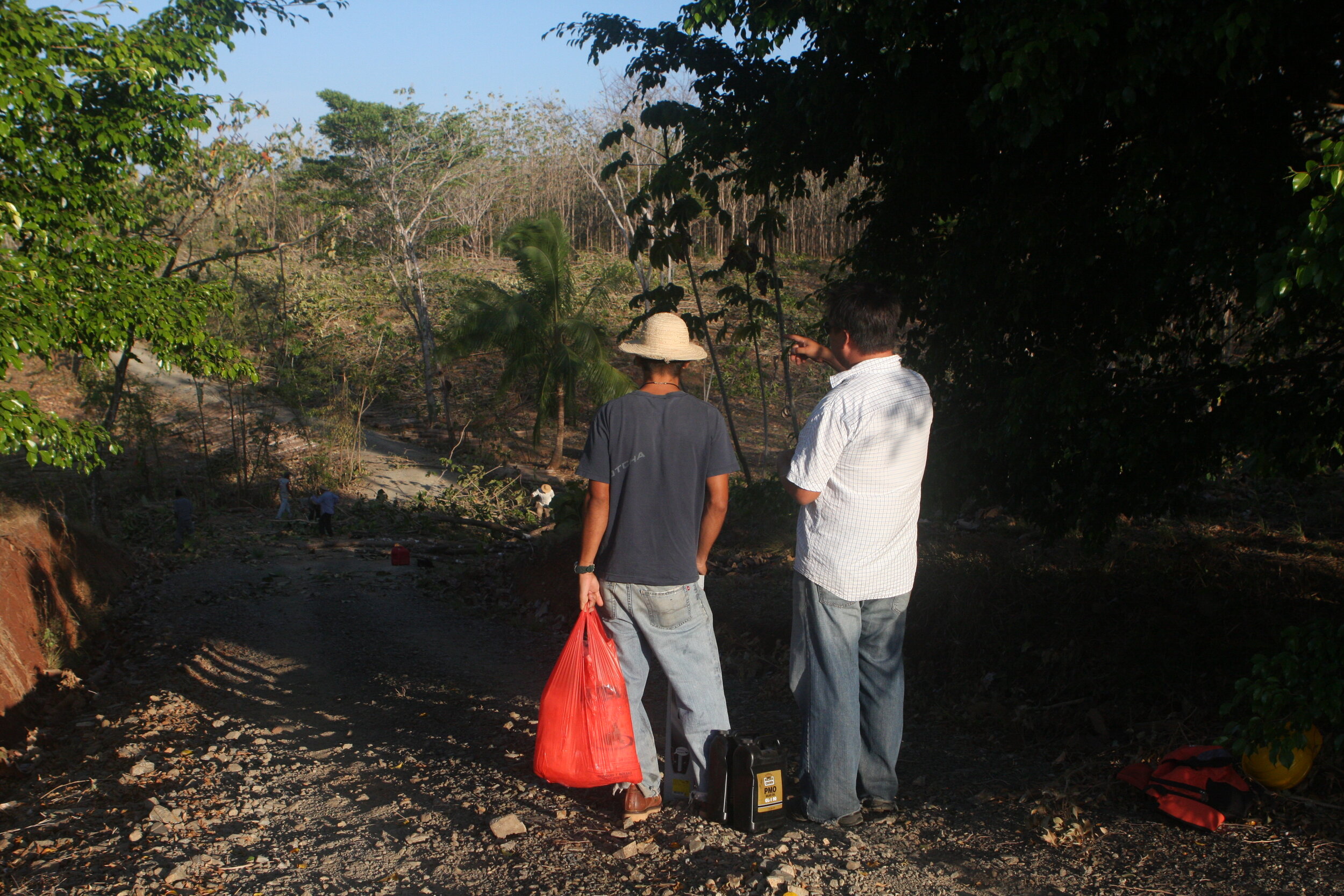

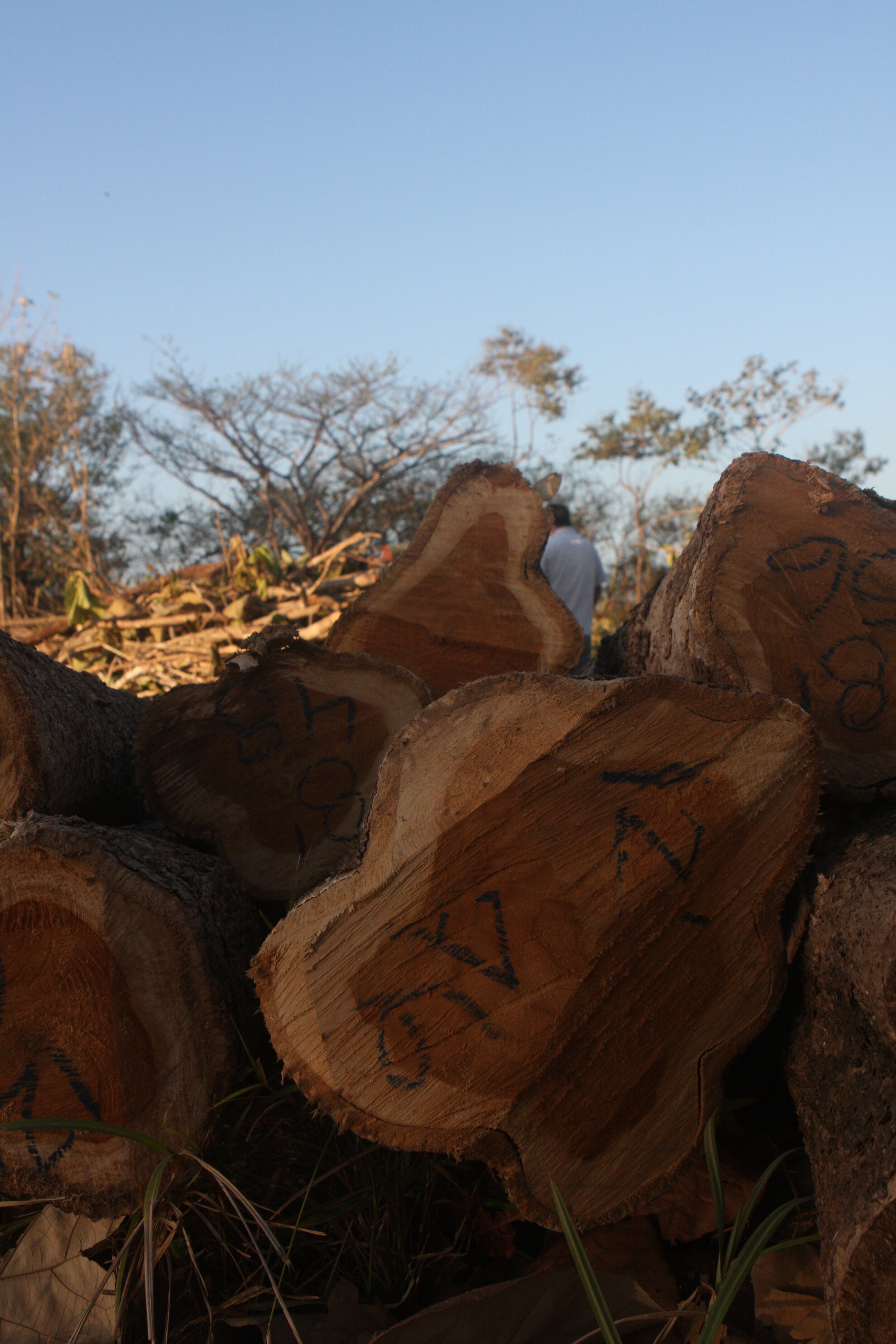
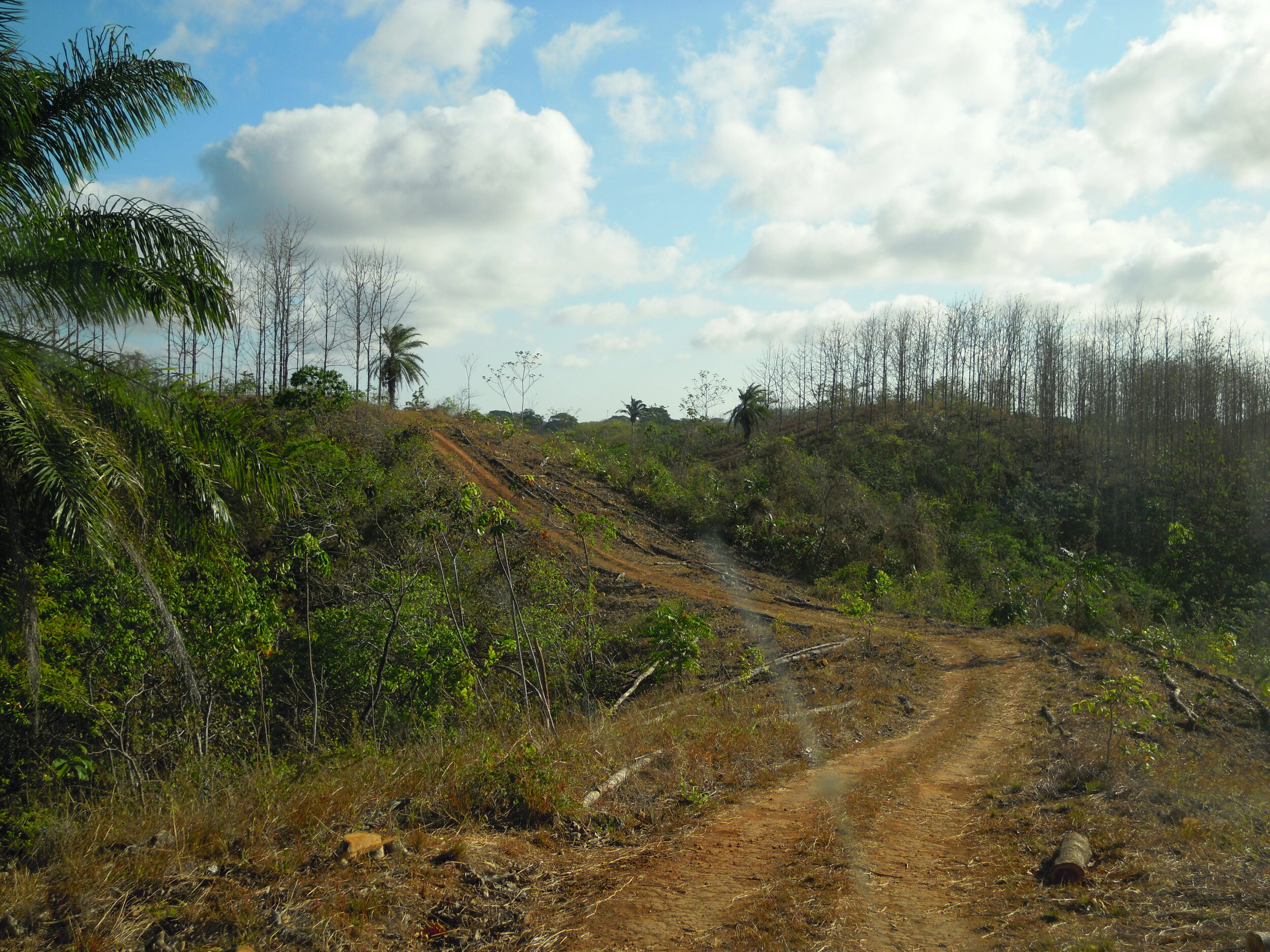

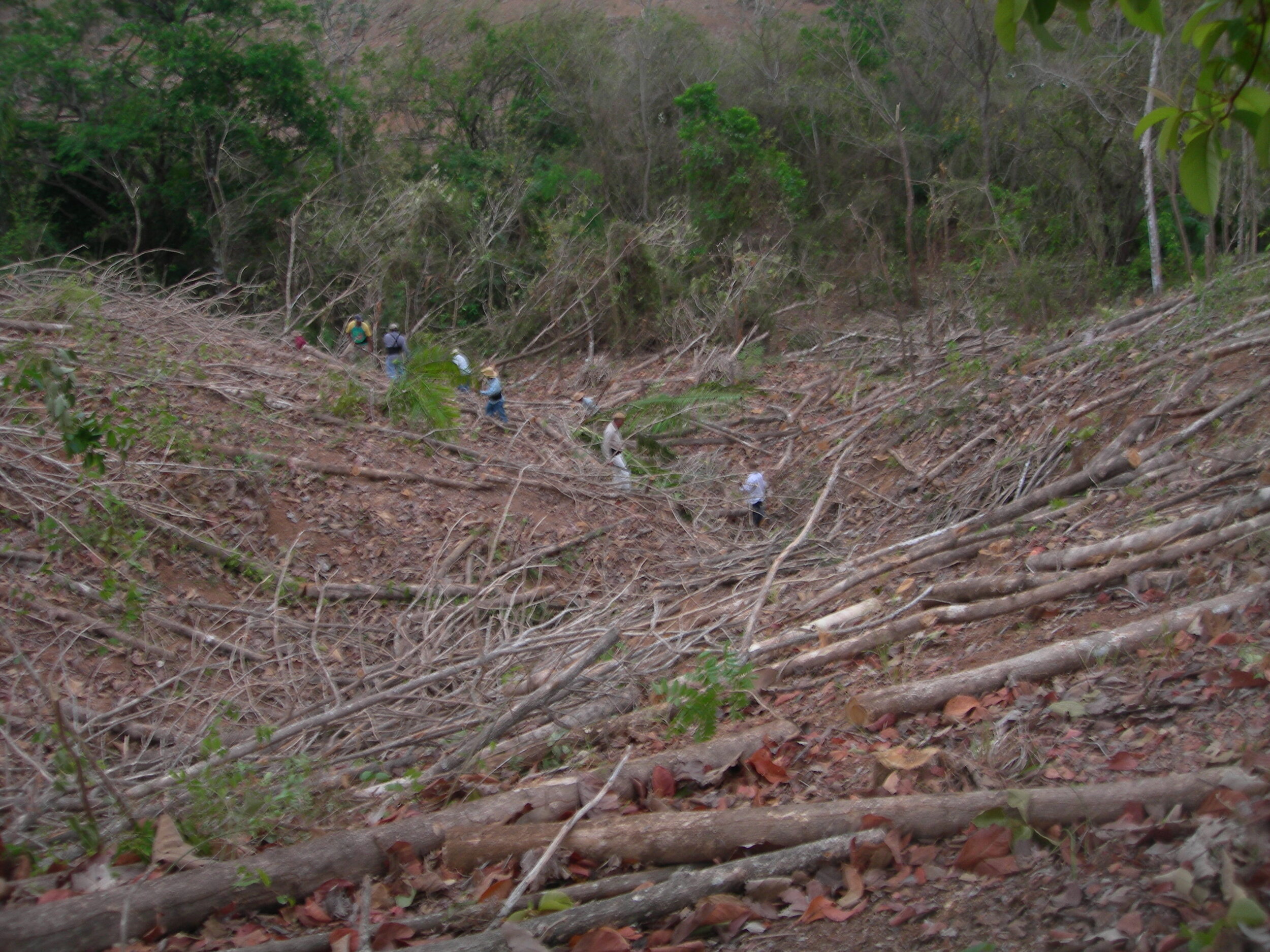
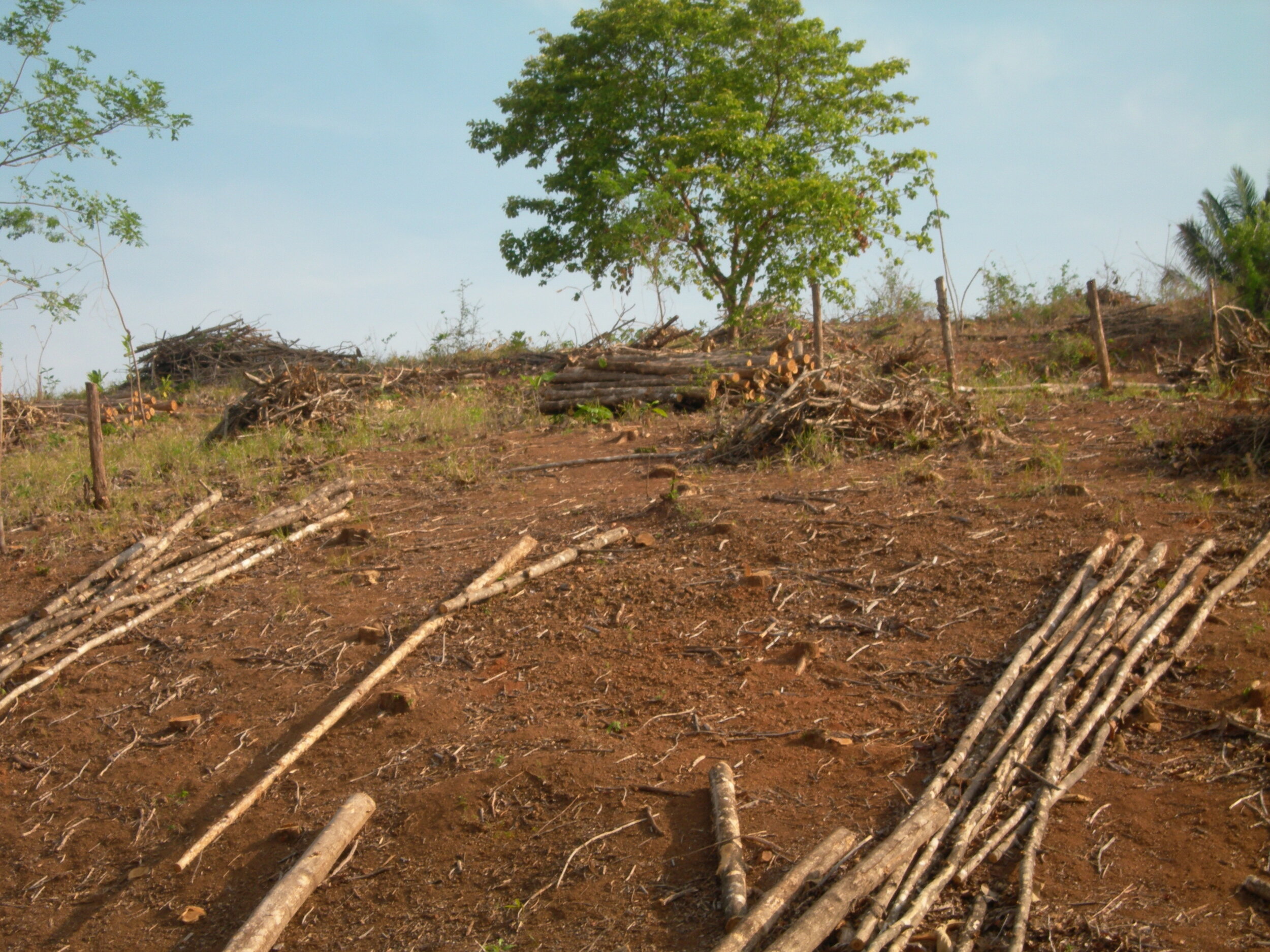

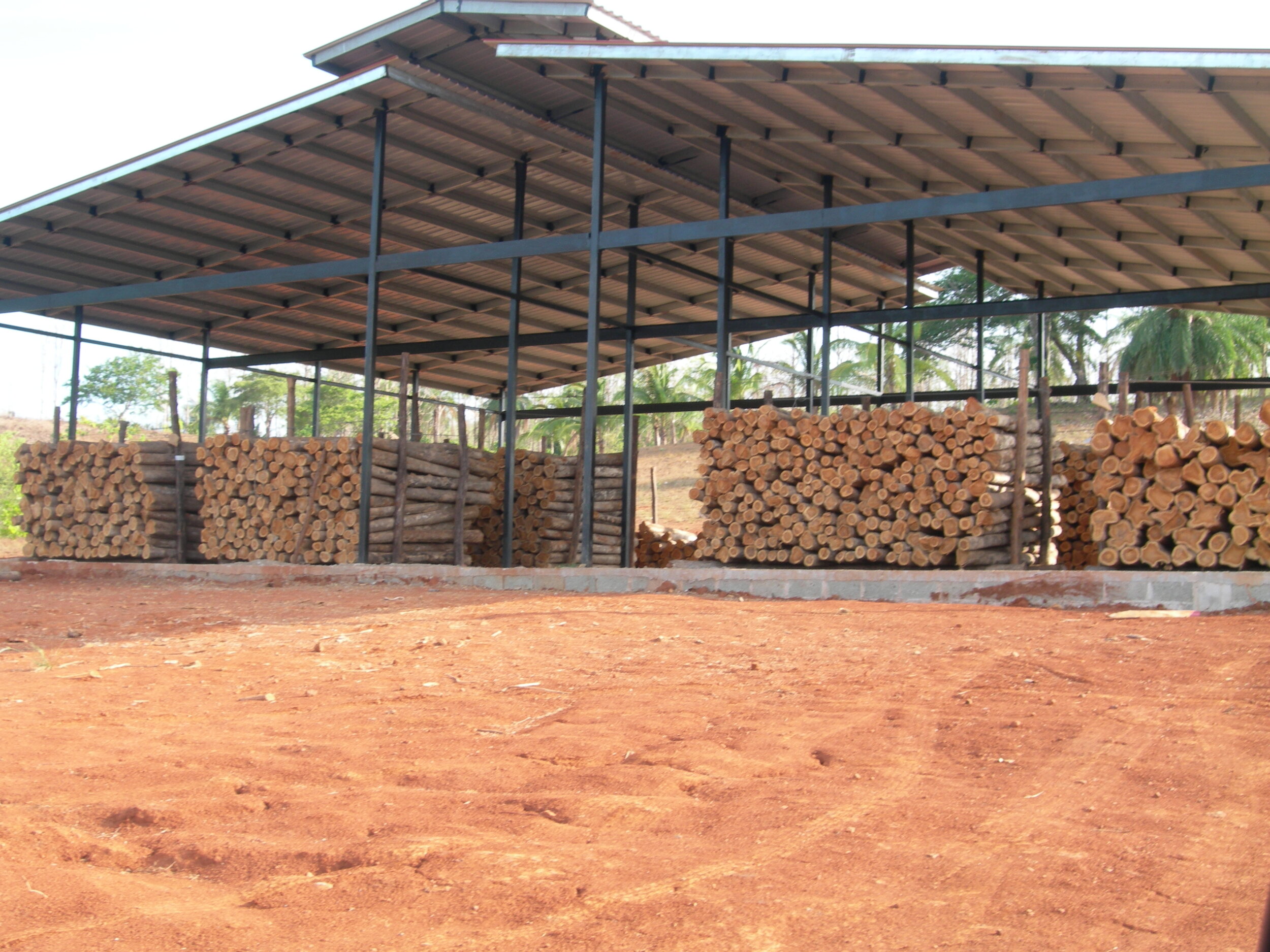
The trees came down fast and made us realize how delicate the environment was and how simple it was to destroy it. The sound of howler monkeys screaming in the far distance in response to the chainsaws is something one can’t forget and that we never want to do again. About two months later, the deed was done - we had more or less rid our site of teak.
On the last day of chainsaw work, after the guys had packed up and gone home, we walked to the overlook on the road and looked back across the hilltops laid bare to the red soil. It felt like we had murdered something. Yes, the teak was invasive and poisonous - but they were still trees - what we saw now was even more desolate and depressing. Years later, we would walk to this same overlook and not even be able to see one hill over for the lush green. In the meantime, things appeared worse before they got better.
With the teak cleared, we had a vast expanse of highly acidic soil to work with. If cutting down the teak took two months, how long was it going to take to grow a native forest? Needless to say, neither one of us New Yorkers had ever planted an entire forest before. Not to mention, we were still building a house, you know, the actual job we came to Panama to do.








